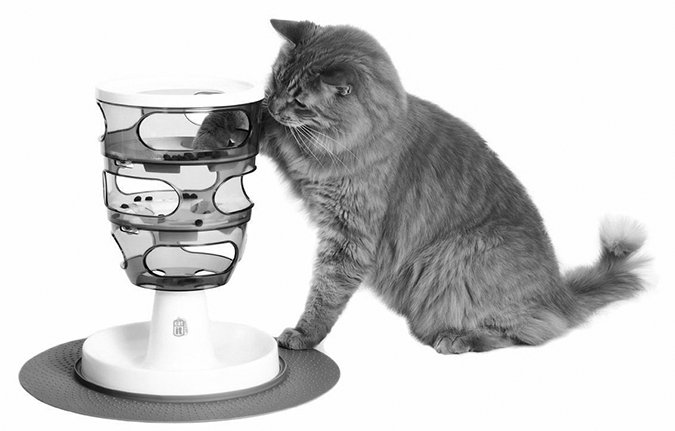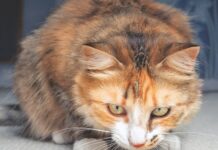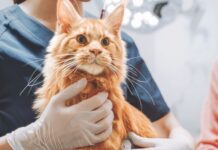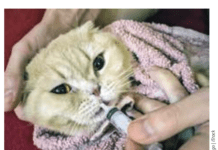‘Foraging Devices’ Make Them Work for Their Food
Given that it’s the official publication of the International Society of Feline Medicine and the American Association of Feline Practitioners, the Journal of Feline Medicine and Surgery doesn’t disappoint in its scholarly approach.
Catit


In advocating environmental enrichment for indoor-only cats, it calls food puzzles “foraging devices.” The journal warns that, if not managed appropriately, indoor life can contribute to health problems such as obesity and diabetes, and problem behaviors such as house-soiling and attention seeking: “The latter can threaten the relationship between cat and owner, and in extreme cases even lead to euthanasia.” (See advice on attention seeking in this issue.)
The journal explains that food puzzles were developed for captive zoo, sanctuary and laboratory animals to take advantage of their instincts to work for their food: They’re natural predators who tend to eat multiple small meals each day. It also addresses availability, noting puzzles are stationary, mobile, rolling and pushed with cats’ noses or paws, and gamely suggests that you could make your own by cutting holes in egg boxes or water bottles.
Then the journal gets down to business, combining science and common sense to help owners make the best use of food puzzles. Acknowledging that this is a relatively new area of study, it offers this advice for owners:
1. Introduce the puzzle when your cat is likely to be hungry. A novel treat may spark his interest and appetite.
2. Start with open puzzles with many openings so your cat can see, hear and smell food inside.
3. If he initially resists working for food, remove his regular food dish. If you think he’ll be stressed by the change, offer the puzzle next to the storage container holding the food.
4. A nervous cat may prefer the puzzle in a quiet area to explore it undisturbed.
5. You may have to roll or nudge the puzzle at first to maintain your cat’s interest.
“Our collective experience is that most, if not all, cats can adjust to food puzzles, given time, patience and proper staging,” the journal says, adding that senior cats, kittens, three-legged cats, blind cats and cats with other disabilities, such as partial paralysis, have all been observed to use a food puzzle of some type.
The ultimate goal: Eventually, you can remove regular food dishes and your cat can receive all his food from puzzles. “Advanced foragers can benefit from your hiding puzzles around the house,” the journal says. The hunt is on.
The Favored Veterinary Topic
Nutrition is the most pressing subject that cat owners want to discuss with the veterinarian, according to a Royal Canin survey of 1,0001 owners in the U.S. But the same survey, conducted at the end of summer, found that 60 percent of owners don’t regularly take their cat to the veterinarian. Compared to dogs, cats are three times less likely to be taken to the veterinarian — they’re often taken only when they’re ill.
Royal Canin lists these signs that cats may need a veterinary checkup: changes in appetite; significant weight loss, more or less water consumption; changes in breathing efforts, activity and litter box habits; vomiting, diarrhea, coughing and sneezing.



